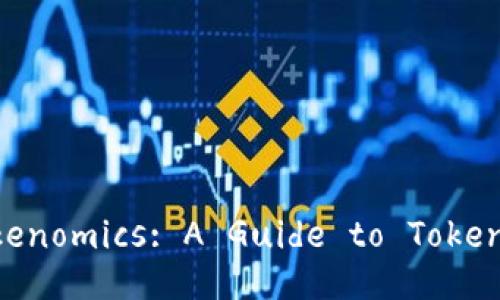Understanding Tokenomics: A Gui
2025-05-19
Tokenomics is a critical concept for anyone diving into the world of blockchain and cryptocurrency. It combines two words: "token" and "economics." Tokens represent units of value issued by projects and are often used within the ecosystem created by that project. Understanding tokenomics is essential for investors, developers, and users to assess the viability of a project, its potential for growth, and overall sustainability.
The rise of decentralized finance (DeFi), non-fungible tokens (NFTs), and various other blockchain applications has made tokenomics more relevant than ever. Through effective tokenomics, projects can incentivize behaviors, create a shared economy, and ensure that all participants can benefit. This guide delves deep into what tokenomics entails, its components, and how it influences the broader crypto space.

Tokenomics encompasses a variety of components that together create the economic framework of a blockchain project. The following elements are crucial in understanding tokenomics:
1. Token Utility: The primary purpose of a token defines its utility. Utility tokens allow access to a product or service within a platform. For example, in decentralized applications (dApps), utility tokens can facilitate transactions, vote on governance issues, or even pay for certain features.
2. Token Supply: The supply of tokens affects scarcity and ultimately value. Understanding the total supply, circulating supply, and inflation rate is vital. Projects typically announce a fixed supply to generate demand and scarcity, but some might have a model that allows for inflation or deflation over time.
3. Token Distribution: The distribution model is how tokens are allocated to various stakeholders. This can include founding team members, early investors, and community incentives. An equitable distribution model encourages trust and stability in the community.
4. Governance Mechanisms: Some tokens come with governance rights, allowing holders to vote on important decisions relating to asset management, protocol updates, and other critical aspects of the ecosystem. This participatory aspect can increase user interest and investment in the project.
5. Economic Incentives: Tokenomics often relies on economic incentives to align the interests of users, developers, and investors. After all, if users are incentivized to participate in a network, it's more likely to succeed. This could involve staking, rewards for participation, and other mechanisms to encourage active involvement.
Tokenomics can make or break a cryptocurrency project. When evaluating a project, investors should pay close attention to its tokenomics model. If poorly designed, it can lead to unsustainable growth and lead to a loss of trust within the community. Here are several reasons why good tokenomics is vital:
1. Attracting and Retaining Investors: Investors are more likely to engage with tokens that have a well-thought-out economic model. Good tokenomics means that investors see a potential return on investment and understand the token's utility.
2. Building a Robust Community: Engaging the community is crucial for any project's success. Projects with clear incentives for user participation create stronger, more dedicated communities. Platforms that integrate governance tokens, for example, allow users to feel invested in the project's future.
3. Market Stability: A solid tokenomics model minimizes volatility. Programs like burning tokens or halting inflation can help stabilize prices and maintain trust among investors. Clear communication about how the tokenomics serves the community can improve overall market confidence.
4. Scalability: An effective tokenomics strategy considers future scalability. Projects that plan for token supply expansions, governance voting systems, and incentives for network growth can adapt swiftly to market changes.
5. Demonstrating Value: Ultimately, tokenomics should demonstrate value. Users will not flock to a platform unless they understand how the token adds value to their experience. Clarity on the role and benefits of the token dramatically affects user engagement and retention rates.

As we explore tokenomics in-depth, users often have specific questions. Here are five commonly asked questions along with detailed answers.
Tokens can be broadly categorized into several types, each serving different purposes within a blockchain ecosystem:
A. Utility Tokens: These tokens grant users access to a product or service. They are often used in initial coin offerings (ICOs) to raise funds. Utility tokens do not typically have any equity stake but are essential for operating within their ecosystem.
B. Security Tokens: Security tokens are digital representations of traditional securities, such as stocks or bonds. They are subject to federal regulations and offer investors rights such as dividends or equity ownership.
C. Governance Tokens: Governance tokens allow holders to participate in decision-making processes of the project. Holders can vote on proposals, influencing the direction of the platform and directly impacting token value.
D. Stablecoins: Stablecoins are pegged to a stable asset like the US dollar or gold. They alleviate volatility, making them attractive for transactions and as a store of value within cryptocurrency exchanges.
E. Non-fungible Tokens (NFTs): NFTs are unique tokens that represent ownership of a digital or physical asset, such as artwork or real estate. They are revolutionizing the art world by allowing creators to monetize their work directly.
The relationship between token supply and value is fundamental in tokenomics. A token's total supply, circulating supply, and the method by which new tokens are introduced to the market all play significant roles:
A. Total Supply: The total number of tokens that will ever exist for a project. A fixed supply often leads to scarcity, which can drive demand and increase price.
B. Circulating Supply: The number of tokens currently available in the market. If the circulating supply increases dramatically, it can dilute existing holders' value if demand does not similarly increase.
C. Inflation/Deflation: Some projects have mechanisms that introduce new tokens over time (inflation), while others actively remove tokens from circulation (deflation). Understanding these mechanisms is crucial to assess potential long-term value.
The interplay between supply dynamics and market demand drives volatility and overall token performance. Investors must analyze this relationship to determine potential future value.
Governance is a crucial aspect of tokenomics, especially in decentralized projects. Governance tokens allow holders to contribute to the development and decision-making of a protocol, creating a participatory model:
A. Voter Participation: Governance mechanisms encourage active participation among token holders. Users can vote on proposals regarding updates, fund allocations, and partnerships, fostering a sense of community ownership.
B. Aligning Interests: Effective governance aligns the interests of users and developers. Token holders who wield voting power will make decisions favoring the network's growth and sustainability, creating a stable platform.
C. Flexibility and Adaptation: A decentralized governance model allows projects to adapt quickly to market changes. Proposals can be swiftly voted on and implemented, keeping the project agile and relevant.
In summary, governance is a form of decentralized decision-making, reflecting the principles of community-driven development underlying most blockchain projects. Strong governance structures enhance user engagement and foster long-term stability.
Identifying good tokenomics requires careful analysis and understanding of a project's economic model. Here are several key indicators to consider:
A. Clear Utility: Tokenomics should define the token's utility clearly. If the token has real utility within its ecosystem and users can see tangible benefits, it likely has a solid economic foundation.
B. Transparent Supply Metrics: Investors should look for transparency in how total supply and circulating supply are managed. Projects that openly discuss their supply metrics and future token releases are more trustworthy and stable.
C. Fair Distribution Models: An equitable distribution model can prevent centralization of power among a small group of holders. Projects that engage their communities in distribution often prove to be more successful.
D. Robust Governance Processes: Examine how governance is structured. Are token holders involved in key decisions? Efficient governance ensures that the project evolves in a way that benefits all participants.
E. Economic Incentives: Projects should demonstrate clear incentives for users to engage with their ecosystem. Staking rewards, community bonuses, and yield farming opportunities can enhance user participation and investment.
The rapidly changing crypto landscape presents several challenges for tokenomics:
A. Regulatory Uncertainty: As governments around the world examine cryptocurrency regulations, projects with uncertain compliance may face challenges in gaining legitimacy.
B. Market Volatility: The crypto market is inherently volatile, and tokenomics must adapt to changes that can significantly affect supply and demand. Stability mechanisms need to be built into tokenomics to mitigate this volatility.
C. Competition: The influx of new projects means more competition. A project can quickly lose relevance if its tokenomics does not offer clear advantages over competing tokens.
D. Community Engagement: Projects rely heavily on their communities. A failure to engage users can lead to dwindling participation and negatively impact network utility and token value.
E. Evolving Understanding of Economics: As the blockchain and crypto space matures, it becomes essential to rethink traditional economic principles to craft more sophisticated tokenomics that are resilient to market fluctuations.
Tokenomics plays an incredibly important role in the success of blockchain projects. For investors, developers, and users alike, understanding the nuances of tokenomics can lead to better decision-making and engagement within the cryptocurrency space. By analyzing community engagement, the utility of the token, and the overall economic model, stakeholders can position themselves better in this rapidly evolving landscape.
In the world of blockchain, staying ahead means continually adapting to change. With an understanding of tokenomics, you'll be better equipped to navigate this complex yet fascinating ecosystem and make informed choices that align with your interests in the digital economy.